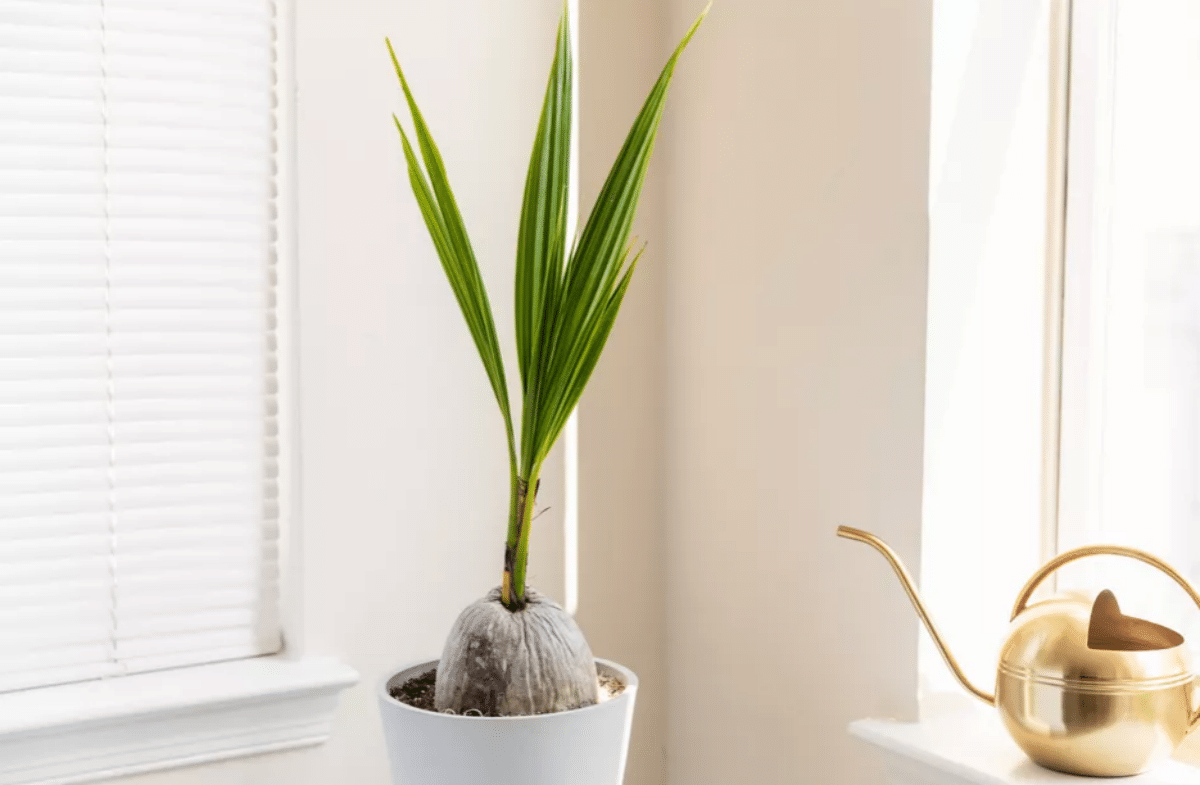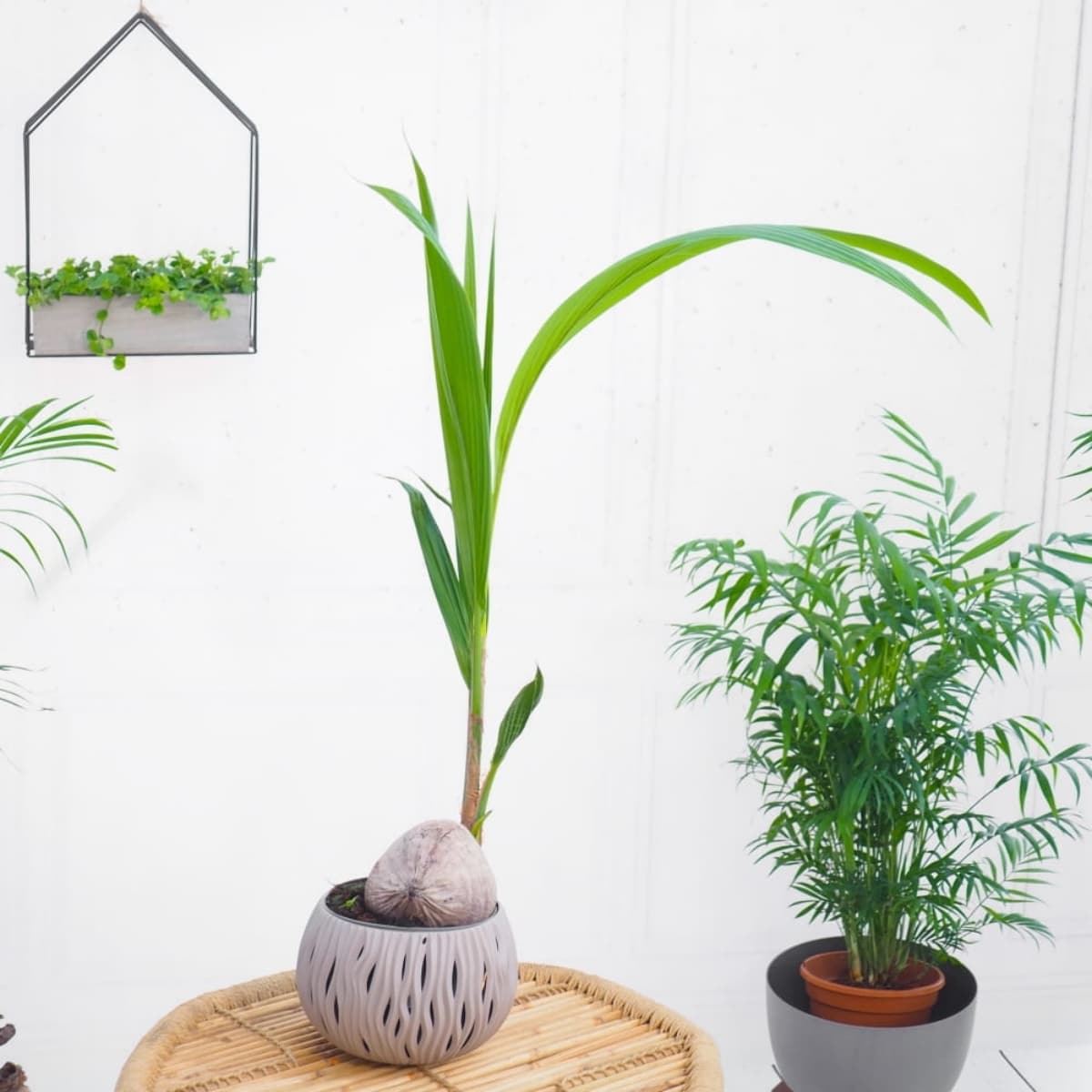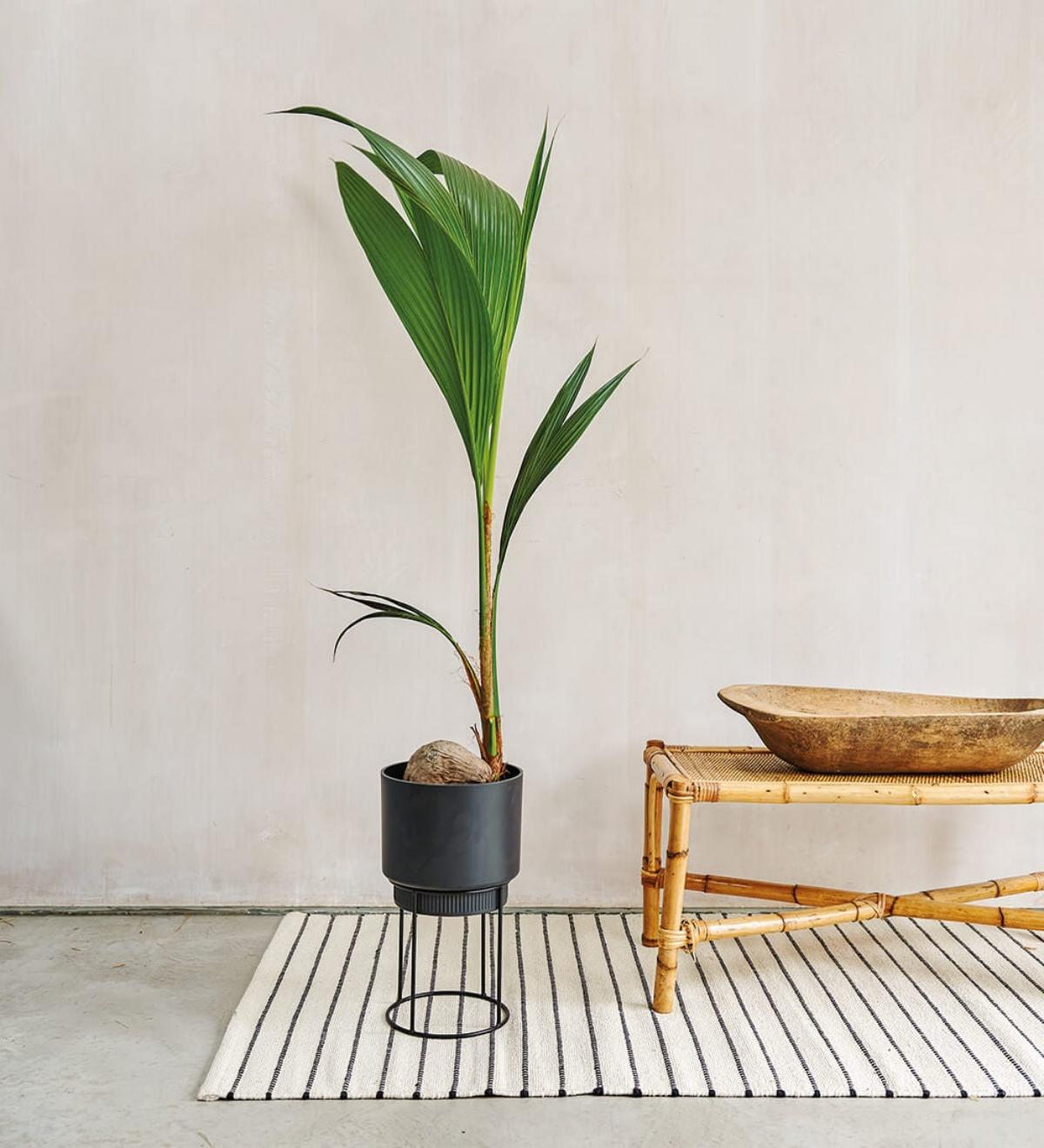
Image - The Spruce / Anastasiia Tretiak
If you live in a place where the climate is temperate and you love the coconut tree, you should know that it is one of the most difficult plants to maintain you can buy. I do not want to disappoint you, but I want you to know that if you plan to spend 15 or 20 euros -which is the price that they usually put in Spain- you will have to be very aware of it, especially in autumn and winter.
But is it possible that it survives? Well, what I can tell you is that it is not impossible, but so that you have a better chance of getting it done, I will explain how to have a coconut tree at home.
What does a coconut tree need?

Image - Cocaflora.com
Light (natural), high humidity, moderate water and temperatures above 15ºC throughout the year. Indoors this is not difficult to achieve, since if for example what we need is light, we can buy a growth lamp for plants such as this; And if the problem is low humidity, we can place containers with water around it or even spray it with water during the warm months (in winter it is better not to do it, as the risk of fungi damaging it is greater).
As for the temperature, it is said that the most suitable is 15-17ºC at night, something that is easy to achieve in an average Spanish home, for example, by putting the heating on for a while. Yes indeed, you do not have to put your coconut tree near any device that generates drafts, regardless of whether they are cold or hot, because if you do, you would see how the leaves would turn brown, starting at the tips.
We will talk about irrigation below.
When and how to water a potted coconut plant?
El Cocos nucifera It is a palm tree that can be found on the beaches in the tropical regions of America and Asia. It is one of the few species that tolerates sea salt and has permanent wet roots. But if we look at any photograph, we will realize that the seed germinates several meters from the water. Why? Because it is NOT an aquatic plant. If we plant it in a pot without holes or if we water it daily, its roots will be drowned.
In addition, we have to take into account the weather factor. The higher the temperatures, the faster the earth dries since not only the solar radiation is higher, but also the palm tree absorbs it to hydrate itself more quickly and, thus, be able to grow. Because, during the cold months we must be much more careful with wateringBecause the temperatures are lower, the plant hardly grows, and the soil takes much longer to dry out completely.
Starting from this, when and how should it be watered? Ideally, the soil should always remain a little moist, so it is highly recommended to get a moisture meter to know its status before adding water. This for example it is very easy to use. If we see that when inserting it the needle stays dry (or »dry»), then we can water.
Now, it is convenient that it be inserted well, inserting the entire sensor (the stick), since the most superficial layers of the earth take less time to dry, and it would not be strange if it indicates that it is dry, when in reality the bottom is wet still.
And by the way, you have to make sure that the water temperature is not too low. It must be at least 18ºC, since if it is very cold it could suffer. Once we have filled the watering can, we will pour the water on the ground, without wetting the plant. If you have a plate under the pot, we will drain it after watering.
Can it be watered with sea water?
Being a palm tree that grows on the beaches, there are many people who wonder if it is possible to irrigate it with water from the sea. And the answer is that the coconut tree withstands salt water, but does not need it to stay alive. Therefore, you can hydrate it from time to time with water from the beach, but keep in mind that it can be watered with fresh water without problem, with a pH between 7 and 8.
When in doubt, you can use a pH meter like this, which is used in the same way as the soil moisture meter, with the difference that to know the pH of the water you have to introduce it into that liquid. It will automatically tell you what its pH is.
When to pay it?
Subscribing is one of the things we have to do if we want it to reach winter as strong as possible, since it may depend on whether it survives or not. For this reason, You have to start paying one week after buying it, and continue doing it for the rest of the year.
But yes: during the warm months I recommend using fertilizers that are quickly effectivesuch as this which is specific to palm trees, or this for green plants. If you prefer organic fertilizers, you can apply liquid guano. But in any case, you must always follow the instructions on the packaging (in general, you have to pour a small amount into the cap of the product and then into a bottle that has 1 liter of water).
During the fall and winter the growth will be minimal, so that the nutritional need of the palm will not be as high as in summer. Even so, it is advisable to continue fertilizing it with fertilizers or slow release fertilizersas this of the Cultivers brand, pouring two small tablespoons (of those of coffee) every 15 days.
How to protect the coconut tree from the cold at home?

Image - beardsanddaisies.co.uk
Although it's hard to believe It does more harm to the coconut tree if the daytime and nighttime temperatures are kept low, than an occasional weak frost. That is the main reason why it is hardly ever grown outdoors in Spain, and that is that in winter the temperature range is low, since the difference between the maximum and minimum temperatures is like this: low. If there were 20ºC during the day, even if it dropped to -1ºC at night for a little while, the palm tree might suffer somewhat, but it would not die.
When grown indoors, although it is protected from sub-zero temperatures, it must be taken into account that the thermal amplitude is not very high either. Thus, it is highly recommended to do the following:
- Take your coconut tree to the warmest room in the house, in which there are windows through which sunlight enters. Do not put it right in front of the glass so it does not burn, and avoid opening them on days when it is cold and / or windy.
- Protect, at least, the pot with a frost blanket for plants, although it is better if the leaves are protected as well.
- Water with warm water every time it touches watering.
- If one day in winter the sun rises and the weather is good, with temperatures above 18ºC, take advantage of it and take it outside, putting it in semi-shade. If it were put in a sunny exhibition it would burn.
One last tip: buy it as soon as the risk of frost has disappeared and the weather starts to improve. Thus, you will have many months ahead to take care of it and get it to adapt to the conditions in your home.
Good luck!